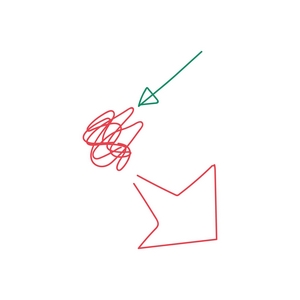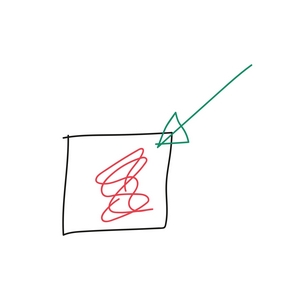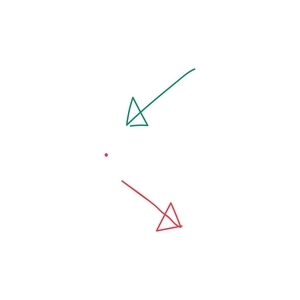Blog/Video #12
When we get triggered it is very uncomfortable. Our bodies want to release the unfinished business from our most extreme reactions to our most overwhelming threats in the past. The reason they are unfinished reactions is because we couldn’t bear them the first time they happened. So there is nothing particularly welcome about them happening again.

The red squiggle in the diagram represents our baggage, the green arrow is a stimulus, or trigger, and the big red arrow is our reaction, which in this diagram represents an overreaction.
Nobody wants to feel like this for too long, and so we have developed a few ways to deal with it.
You’re the problem
If I’m triggered 9/10, and if I don’t want to be the problem, then you are. This is typically our default. Most of us spend most of our lives, with our families, our loved ones, our friends, our colleagues, or even with strangers, blaming them for everything that is set off inside of us by a 3/10 trigger. It’s because of our unfinished business. This can be the subject of humour, or it can be overwhelming and even tragic. Relationships, friendships and families can struggle to survive. These delayed reactions are the petrol on the fire of everything that makes our relationships fall apart. Unless we understand what we, or they, are doing.
It’s not happening at all
What happens if the reaction is so great that it goes over 10/10? Our responses to threat were built up over time by evolution. When a mammal gets overwhelmed, it goes back in time to an earlier response to threat, the earliest of which is freeze. (After freeze is fight/flight, then vigilance, and then social engagement.) So there is actually another response to being triggered, which is to have no response at all. It looks like this:

In the above diagram, our baggage is represented by the red squiggle. The green arrow is a trigger, and the box represents a shutting down, or freeze, where there is no output/reaction.
This can be a lot more bearable both for the person triggered and for those around them, but it is a step even further away from health. This person is so overwhelmed by their baggage, and by their potentially explosive reaction to that baggage, that they have become frozen.
They have no way to connect, or to react, or to respond, or even to protect themselves. These are the people who get abused in relationships, bullied at school or at work, feel disconnected, alone and lost. But nonetheless they are often compliant, and so can often not even hit the radar of having a problem with their behaviour or relationships.
I can manage my own problem
Nothing on this spectrum is ideal, but recovery can happen. If you can work with your nervous system to manage it better when it is reactive, then these issues can organically improve. The person who is shut down might start to come to life again, which will inevitably look like an overreaction. And then the person who is overreacting may start to deploy strategies to make that easier on both themselves and others.
In the end, with enough work on the nervous system, there is the possibility of a Shangri-La-like state of meeting triggers from the world with no baggage at all:

A 3/10 stimulus elicits a 3/10 response. No trigger, no baggage, no reaction. Not too much, not too little, just a goldilocks reaction to life in the moment. This is where you are in balance with the world and the world wants you to be its friend.
This is a very hard state to attain, but fortunately, you can fake it until you make it. You can do this by implementing boundaries and containment, which you can read about in the blog section of The Invisible Lion website or in the book, The Invisible Lion.
You can download this post in a handy 2-page PDF to print and share with friends, family, clients or colleagues. Follow this link to download now.
You can buy a copy of The Invisible Lion now on kindle or paperback from your local Amazon store. Just click here to buy now.

